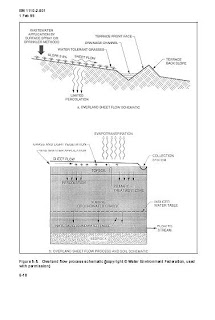Design, Construction, and Operation SMALL WASTEWATER SYSTEMS
Wednesday, March 10, 2010
Chapter 1
Introduction
Purpose 1-1
Applicability 1-2
References 1-3
Distribution Statement 1-4
Laws and Regulations 1-5
Chapter 2
Preliminary Data Requirements General 2-1
Recreational Facilities 2-2
Determination of Effluent Limitations 2-3
Site Selection Factors 2-4
Chapter 3
Wastewater Generation and Characterization General 3-1
Visitation and Length of Stay 3-2
Variations in Visitation 3-3
Water Usage and Wastewater Generation 3-4
Monthly and Daily Flow Distribution 3-5
Wastewater Characterization 3-6
Chapter 4
Collection Systems General 4-1
Absence of Pressurized Water Supply 4-2
Transport by Truck 4-3
Gravity Flow Systems 4-4
Force Main Systems 4-5
Alternative Wastewater Collection Systems 4-6
Chapter 5
Treatment Design Considerations General 5-1
Small Individual Units 5-2
Conventional Wastewater Treatment Facilities 5-3
Stabilization Ponds 5-4
Natural Systems for Wastewater Treatment 5-5
Man-Made Wetlands 5-6
Nutrient Removal 5-7
Sludge Treatment and Disposal 5-8
Disinfection of Wastewater Effluents 5-9
Chapter 6
Laboratory Design, Sampling, and Flow Monitoring General 6-1
Laboratory Design 6-2
Sampling and Analysis 6-3
Flow Monitoring 6-4
Chapter 7
Treatment Process Selection Overview 7-1
Site Visitation 7-2
Local Resources 7-3
Economic Considerations 7-4
Health Considerations 7-5
Aesthetic Considerations 7-6
Safety Considerations 7-7
Access/Security Considerations 7-8
Comparison of Treatment Processes 7-9
Chapter 8
Design References and Examples General 8-1
Military Design Manuals 8-2
National Small Flows Clearinghouse (NSFC) Publications 8-3
Wastewater Design Manuals and Texts 8-4
U.S. Environmental Protection Agency (EPA) 8-5
Wastewater Design Criteria and Example Matrices 8-6
Additional Design Examples 8-7
Chapter 9
General Wastewater System Design Deficiencies General 9-1
Overall Considerations 9-2
Conventional Design 9-3
Preliminary Unit Processes 9-4
Primary Treatment Unit Process 9-5
Secondary Treatment Unit Processes 9-6
Sludge Dewatering 9-7
Non-Conventional Plants 9-8
Land Application 9-9
Sludge Drying and Disposal 9-10
Sewer Collection Systems 9-11
Lift Stations 9-12
Chapter 10
Sludge Disposal General 10-1
Definitions 10-2
Management Standards 10-3
Toxic Metal Regulations 10-4
Effect of Land Application 10-5
Pathogen and Vector Attraction Reduction 10-6
Exclusions 10-7
Land Application Pollutant Limits 10-8
Land Application Management Practices 10-9
Surface Disposal Pollutant Limits 10-10
Pathogens and Vector Attraction Reduction 10-11
Pathogen Treatment Processes 10-12
Septage Applied to Agricultural Land, Forests, or Reclamation Sites 10-13
Wastewater Scum 10-14
Composting Methods 10-15
Composting Additives/Amendments/Bulking Agents 10-16
Equipment 10-17
Guidance 10-18
Total 7 MB 200 Page
Download






0 comments:
Post a Comment